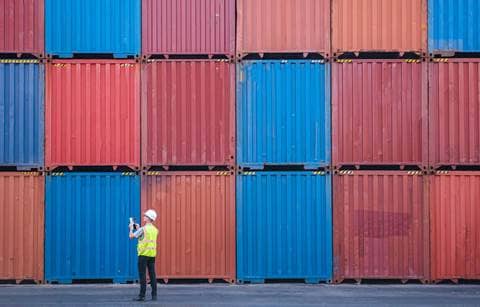As a result of the 2020 COVID-19 pandemic, the Chinese central government and local governments have been releasing a series of incentives to support businesses facing pandemic-related operational and financial challenges.
Among the major financial and tax incentives issued by the Chinese government, policies related to VAT (value-added tax) reduction and exemption, corporate income tax (CIT) deferral, and social security payment reductions are the most direct and effective measures to help alleviate financial burdens on businesses.
Some incentives, such as the social insurance payment reduction, are automatically applied to eligible businesses, but others are only available to companies that apply. We recommend all businesses take a closer look at the incentives and apply for those for which they qualify. These incentives are meaningful, and they can save businesses operating in China significant funds. But keep in mind, the policies are for the 2020 tax year, and the deadline to apply in most cases is Dec. 31, 2020.
Below, we summarize the key policies that may impact your China operations in 2020 and the near term, including:
- VAT reductions & exemptions
- CIT reductions & deferral
- Corporate social contribution payment reductions & refunds
Value-added tax
Incentive highlights:
- Small-size taxpayers can apply for 1 or 0% VAT rates, depending on the regions in which they operate.
- Eligible general taxpayers can apply to switch their status to small-size taxpayer to enjoy VAT rates of 0 or 1%.
- Companies in certain industries can apply for a VAT exemption.
Who can enjoy the incentive?
- All small-size taxpayers
- Qualified general taxpayers
Key considerations
Clients should evaluate the impact of VAT rate changes on product pricing with their suppliers, customers, and tax advisor before applying.
The VAT is a major turnover tax in China, levied on the added value of taxable goods and services generated throughout the production and distribution process. Taxpayers of VAT are categorized into general taxpayers and small-size taxpayers, based on their taxable sales in the previous 12 months. The ceiling for small-size taxpayers is RMB 5 million sales in previous 12 months, and small-size taxpayers typically pay 3% VAT on both goods and services. Taxpayers whose annual sales exceed that amount must apply for general taxpayer status. General taxpayers are primarily subject to a 13 or 9% VAT rate on goods sold and 9 or 6% VAT for services.
In April, as part of the COVID-19 incentives, the State Tax Administration (STA) issued Announcement 9, which establishes that companies designated as general taxpayers can apply to change their status to small-size taxpayer, as long as the company’s cumulative sales revenue in the 12 months prior to application doesn’t exceed RMB 5 million. The deadline to apply for a change in status is Dec. 31, 2020.
In addition, in February 2020, the Ministry of Finance (MOF) and STA issued Announcement 13 to exempt small-size taxpayers in Hubei province from VAT and to reduce VAT to 1% for companies in all other regions nationwide from March 1 to May 31, 2020. This means companies that switch their taxpayer type from general to small-size taxpayer during this period can enjoy a 1 or 0% VAT rate compared to the original 13, 9, or 6% major VAT rates, a significant reduction.
In April, the MOF and STA released Announcement 24, which extends the VAT exemption and reduction incentives period until Dec. 31, 2020. Small-size taxpayers now can benefit from the favorable VAT rate until the end of the year.
A full VAT exemption is available for companies in the civil and public service industries, such as those providing public transportation services, living services (such as healthcare, education, catering, sports and entertainment), express delivery services, and transportation services for key COVID-19 prevention and control materials, medical supplies, and agricultural products. The exemption applies throughout 2020, regardless of company size or taxpayer type, according to STA Announcement 8 and Announcement 24.
In addition to the COVID-19 incentives, the STA issued a policy in 2019 stating that small-size taxpayers with monthly sales under RMB 100,000, or accumulated quarterly sales under RMB 300,000, can enjoy a full VAT exemption through the end of 2021.
The impacts
Under normal circumstances, general taxpayers aren’t allowed to change their taxpayer status, so this incentive represents a unique chance to benefit from a lower VAT rate — from the major VAT rates of 13, 9, or 6%, to the favorable rates of 0 or 1%.
Since VAT is a turnover tax, changes in the VAT rate will have pricing impacts along the supply chain, so talk with your tax advisors, suppliers, and customers about pricing strategies before applying for any VAT incentive.
Corporate income tax
Incentive highlights:
- Businesses in certain industries can extend their loss carryforward period from five to eight years.
- Eligible small-size, low-profit businesses can defer their CIT payment until 2021.
- Companies that donated COVID-19-related supplies or cash can fully deduct the donation value (rather than 12% cap of net income) from their CIT payment.
Who can enjoy the incentive?
- All qualified taxpayers
Key considerations
The CIT incentives can make a big difference in companies’ cash flow and tax savings, so all eligible firms should apply.
The STA has issued a series of CIT reduction and deferral policies to support small- and medium-size enterprises (SME), manufacturers of key COVID-19 supplies, and industries particularly affected by the pandemic.
According to STA, Announcement 8 enterprises in industries negatively impacted by the pandemic can extend the carryover period for losses incurred in 2020 from five years to eight. This policy covers enterprises in the following sectors:
- Transportation
- Catering
- Accommodation
- Tourism
In addition, equipment purchased in 2020 by manufacturers of key epidemic prevention and control materials to expand production capacity can be 100% expensed when calculating the CIT.
For small-size low-profit enterprises, the CIT payment from Q2 to Q4 2020 can be extended to the first tax filing period in 2021, per STA Announcement 10. Small-size low-profit enterprises must meet all three of the following conditions to qualify:
- Total number of employees doesn’t exceed 300.
- Annual taxable income doesn’t exceed 3 million RMB.
- Total assets don’t exceed 50 million RMB.
Companies that donated cash or goods for COVID-19 prevention and control purposes in 2020 can enjoy a full CIT deduction for the donation. Previously, the deduction was capped at 12% of net income, and any amount over the 12% limit was evenly divided and deducted from the CIT equally over the following three years.
The impacts
Many small- and medium-size businesses operating in China meet the three conditions that make them eligible for the CIT deferral incentive, which can help improve cash flow by delaying payment until 2021.
Extending the loss carryforward to eight years helps reduce the CIT for several more years. And the 100% deduction on donations directly related to COVID-19 control, intended to encourage companies to donate cash and goods, is a significant increase over the usual 12%. We encourage you to consider your company’s eligibility for all of these incentives and apply if you haven’t yet.
Social insurance contribution
Incentive highlights:
- Small- and medium-sized enterprises in many regions can receive a full exemption on the corporate-paid portion of employee pension insurance, unemployment insurance, and work injury insurance in 2020.
- Large-size enterprises can receive a 50% reduction.
- The company-paid portion of employees’ health insurance can be reduced by various rates, depending on the region in which the company operates.
- Companies meeting local employee retention criteria can apply to the local government administration for a 50% refund of unemployment insurance paid in 2019.
Who can enjoy the incentive?
- All businesses
Key considerations
These incentives help reduce mandatory social insurance payments and can reduce the costs to all businesses, regardless of size, for 2020. Note that while the social insurance payments automatically will be reduced for firms that are eligible, companies must apply for the 50% unemployment insurance refund.
The social insurance contribution systems in China have long been an important part of a company’s operating cost structure. Generally, companies pay approximately 35% above an employee’s salary for social contributions, including pensions; health, unemployment, maternity, and work injury insurances; and housing funds. To ease the financial burden on businesses during the pandemic, Chinese state and local governments have issued a series of policies to reduce some of these social contribution costs.
In February 2020, the Ministry of Human Resources and Social Security issued Announcement 11 as general guidance on the reduction or exemption of the company-paid portion of pension insurance, unemployment insurance, and work injury insurance (known as the “three social insurances”); health insurance; and maternity insurance for employees. Following the guidance, local governments issued detailed rules and regulations to implement incentives.
Due to the complex and diverse social contribution systems of each province and city, we’ll use Shanghai’s regulations as an example. Normally, companies’ costs for the three social insurances totals about 17% of an employee’s salary, with a minimum and maximum cap on the base payment. Under the new policy, in Shanghai, from February to December 2020, SMEs are fully exempted from payment for the three social insurances.
From February to June 2020, large-scale companies in Hubei province were exempted from the payment, and businesses in other regions could apply for the payment to be discounted by 50%.
Businesses severely affected by the pandemic can also apply for deferral of the three social insurances payment until the end of December 2020.
Besides the three social insurances, many local governments have also reduced corporate health insurance and maternity insurance payments in 2020. In Shanghai, from February to June 2020, the company-paid portion of the health insurance (9.5%) and birth insurance (1%) payment has been reduced by 50 to 5.25% in total. From July to December 2020, the corporate health insurance payment is 9% with a 0.5% deduction.
In addition, companies with high employee retention can apply for refund of 50% of the unemployment insurance they paid in 2019. The criteria for demonstrating high employee retention are determined by local governments, so they vary.
The impacts
The payment reductions and deferrals depend on several factors, including salary amounts, business size, location, and pandemic impacts, but many businesses will qualify for full exemptions. The savings can be notable in most cases.
Companies with high employee retention should also look into applying to their local government for the 50% refund of their 2019 unemployment insurance payment. Many businesses are unaware of this incentive.
Stay updated
COVID-19-related policies and incentives are changing rapidly, so it’s important to follow regulatory updates closely and proactively. We’ve helped many clients apply for and take advantage of incentives for which they didn’t realize they were eligible.
As we enter the fourth quarter of the year, the window of opportunity is closing with the Dec. 31, 2020, deadline drawing near. Be sure your company’s China-based team stays in communication with its local government administration, and you can always contact Plante Moran’s China team and tax experts to learn more about — and maximize — the incentives available.





